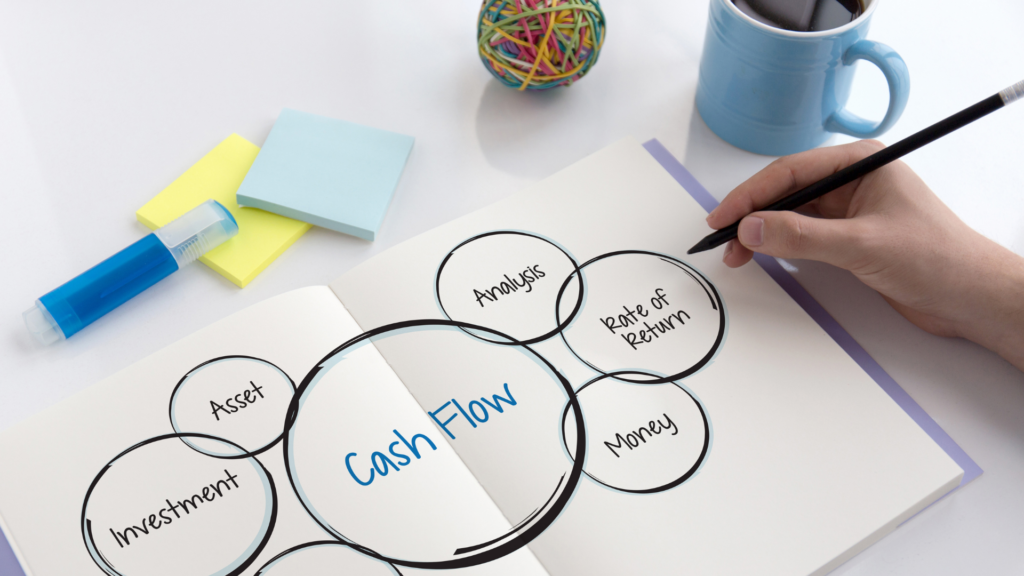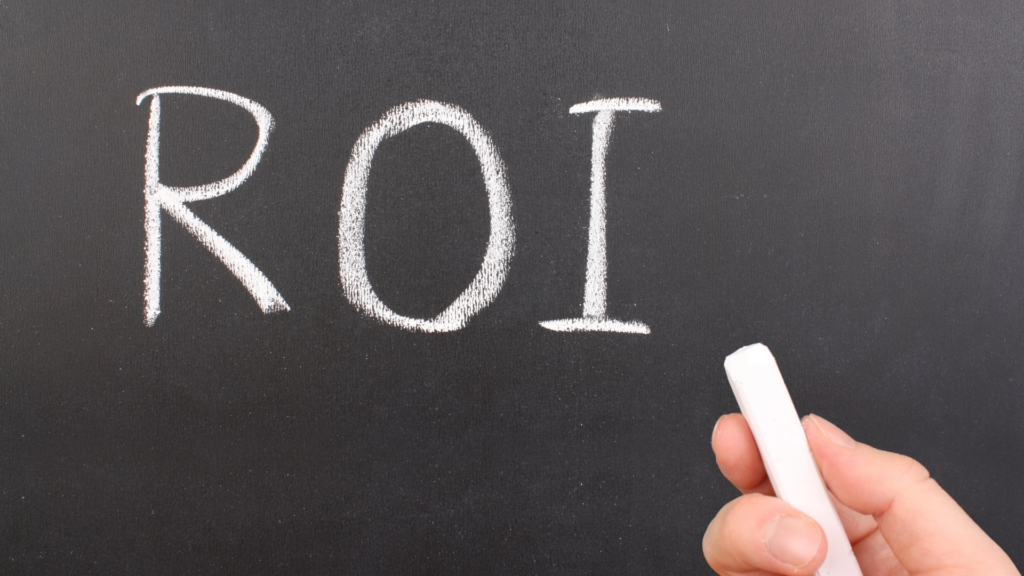The Basics Of Cash Flow

You’ve heard of the term “cash is king”—but what does this really mean, and how does your cash flow affect your everyday living and financial health? This article takes you through all things cash flow—so that you can attain a deeper understanding of this fundamental financial principle and apply the knowledge in your own life.
Whether you’re a charitable foundation, non-profit organization, or simply an individual looking to maintain a stable income independent of your other assets, maintaining a certain level of cash flow provides you the benefit of being able to hold on to your investments during times of market volatility.
You may have experienced a situation where you’ve been promised a “cash flow for life” from investment firms—but have come to see that it’s merely your own capital that is being returned, with little else to show for your investment efforts.
Further to this painful outcome, you’re oftentimes responsible for paying additional, sizable tax sums—more than if you were to take up an alternate investing strategy. You’re left with nothing but an erosion of your capital over time.
This guide will take you through the basics of cash flow and cash flow management.
We will show you what real cash flow looks like, provide you with real world examples, and define some of the technical terms you’ve heard thrown around. Most importantly, we will emphasize that it’s not what you have, it’s what you keep.
Cash Flow For Beginners
What Is Cash Flow?
- In the most simple of terms, your personal cash flow is the money flowing in to your bank account minus the money flowing out.
- Cash flow is like legs—without legs, it is difficult to move and to achieve certain goals and aspirations. It is important to keep your legs moving to be able to lead a certain lifestyle.

Why Is Cash Flow Important?
- Many of us have heard of (and have) a “rainy day” fund—some money set aside for emergency expenses, like a car breaking down, or an unexpected hospital bill.
- Having a healthy ratio of cash pouring in, to money flowing out, can help to provide us with the flexibility and confidence that we can easily cover anything that comes our way—and, maybe even have a little left over for a nice vacation or gift.
How Do You Calculate Cash Flow?
Personal Use:
To calculate cash flow, add up the money coming into your bank account (i.e. your salary and any other income you receive regularly, perhaps from a side hustle) and subtract all of the money flowing out of your bank account—for example, the amount of your mortgage or rent each month, and what you spend at the grocery store and pharmacy.
Business Use:
For businesses, cash flow can signify the overall health of the organization—it provides an owner with an understanding of the cash they have with which to pay business expenses, taxes, and loan repayments, buy additional assets, or pay dividends. A company’s cash flow is dependent on the revenue they generate less the expenses they incur.
A company’s cash flow statement is important to investors, as it demonstrates the financial strength of a company and helps to determine if the company is financially strong enough to sustain operations. It also helps investors determine a company’s long term outlook given potential future costs that the company will need to incur.
What is the Difference Between Cash Flow and EBITDA?
Personal Use:
Individuals often look at the difference between cash flow and EBITDA for investing purposes, and not for their personal finances. Earnings before interest, taxes, depreciation and amortization (EBITDA) is a measure of profitability. EBITDA is calculated pre-tax and pre-interest and before some other expenses, whereas cash flow is calculated after taxes and interest on loans—which for some businesses, better illustrates the company’s true earnings.
Forty years ago, cash flow and earnings ruled the investment universe. Gradually, EBITDA started to take over as the important measure in analysis, and it is still widely used today to determine if an investment is reasonably valued.
EBITDA calculations, by definition, always produce a higher dollar amount than cash flow. Skeptically, this is perhaps a way to justify higher stock valuations, though both cash flow and EBITDA per share calculations are subject to different multiples.
Business Use:
Businesses often examine the difference between their cash flow and EBITDA to determine how they will be valued by the public market and how they stack up to their competitors.
From the viewpoint of businesses, EBITDA provides a wider scope of a company’s financial situation. Some organizations are very profitable, but have limited cash flow, as all of their profit is reinvested into the business (this can vary by industry).
How Does Cash Flow Differ from Profit?
Personal Use:
For personal use, profit is the calculation that shows an individual essentially how much money or surplus they have left over from what they have earned after deducting everything they owe, whether or not these amounts have been received or paid in cash. It demonstrates how well the financial commitments they have are covered by the income they earn.
This is contrasted with cash flow—which, as we’ve learned above, is the cash that is available from earnings after paying day-to-day and occasional expenses, and paints a picture of how much cash a person has available to maintain the lifestyle they desire.
Business Use:
From an organization’s perspective, while both cash flow and profit are vital for a company to thrive, there is a distinct difference between the two.
Profit is what is left after all expenses have been deducted from revenues, and is in contrast to cash flow, which is the flow of money in and out of a business. A company with positive cash flow is not necessarily profitable. Cash flow may be used to reduce debts, pay expenses, pay dividends and it is a way of demonstrating that a company’s liquid assets are rising. Conversely, negative cash flow demonstrates that liquid assets are diminishing.
It is important that investors keep a close eye on both profit and cash flow. While a company can be highly profitable in one period, there is no guarantee that it will be profitable in the next period.
Why Do You Need to Look at Both Cash Flow and Net Income?
- Both net income and cash flow are important to consider in your personal life, and when analyzing organizations to invest in.
- Net income is the profit a person or business has earned for a period (gross income minus expenses), while cash flow is the net difference between cash coming in and coming out.

Why Should You Focus on Return on Investment?
You have likely heard of term ‘Return on Investment’, or ‘ROI’ for short. Simply put, ROI is the amount of money that you’ve gained or lost on a certain investment relative to how much that investment cost you.
In other words ROI measures the profitability of your investment. This can be a useful calculation when looking at investments, when deciding whether you want to make an investment in a new venture such as a new business or when looking at real estate investment properties. The main drawback to relying on ROI as a method of determining if your investment is profitable or not is that it does not account for the length of time for which a specific investment is held, which can be an important factor to consider.
What Determines a Good Return on Investment?
- A good ROI is based on your financial needs. For example, if you are of retirement age you may want a rate of return that generates enough income to live comfortably and ensure you don’t have to worry about your financial future.
- On the other hand, if you are trying to save money to buy a house then you would want an ROI that will provide enough income to help you with the down payment.
How Do You Calculate Return on Investment?
ROI = (Change in Value of Investment + Income) x 100% / Cost of Investment
What is the Difference Between Return on Investment and Return of Investment?
- We have already discussed what Return on Investment is; however, you may also be concerned about Return of Investment, especially during times of market volatility or weakness. Return of Investment describes the return of the money you originally invested—meaning that you have not lost any money.
- Both are important factors to consider when making any investment—how much profit could I make (upside gain), but what is the risk of not getting my money back (downside risk)? Often (but not always) the higher the upside gain, the higher the downside risk. The level of risk-reward payoff you are comfortable with is dependent on your personal risk tolerance.
How Can You Improve Your Cash Flow?
Now that we’ve defined cash flow and studied the concept against other common cash calculations, we can jump into how to enhance it and apply the learnings within our own lives.
What Increases and Decreases Cash Flow and What Factors Can Affect Cash Flow?
To increase cash flow, you can either increase your income, or decrease your expenses (or, ideally, both!).
Some examples of increasing cash flow by increasing income include:
- Negotiating your salary.
- Investing in dividend-paying stocks.
- Strategically housing your money in accounts that yield high interest.
Some examples of increasing cash flow by decreasing expenses include:
- Accelerating debt payoff—this way, you decrease your total interest payments.
- Refinancing debt—obtaining a lower interest rate allows you to decrease your expenses.
- Limiting unnecessary expenses.
How Do You Create a Reliable Annual Cash Flow?
- A reliable annual cash flow can be generated from various types of investments such as real estate, mortgages, bonds, guaranteed investment certificates, treasury bills and dividend paying equities such as preferred shares and common shares.
- Which of these investments is appropriate will depend on an investor’s risk appetite, as well as the current state of investment markets. It should be noted, however that this cash flow can be predictable, but it is never guaranteed.
How Much Tax Will You Pay on Your Investments?
At Bloom, we believe that “it’s not what you have—it’s what you keep”. The fundamental principle is having tax efficient income so that you have more in your pocket. Here are a few key points to note when it comes to navigating taxable income:
- Income from annual RRIF distributions bear tax at the highest rate applicable to you.
- Interest income, while usually more assured, is also taxed at the highest rate applicable to you.
- Dividend income is taxed at lower rates and helps to deliver cash flow, whether an investor reinvests this income or withdraws this income on a regular basis for lifestyle needs.
- REITs have some tax advantages.
- Capital gains are taxed at the lowest rate.
We hope this guide has provided you with a comprehensive introduction to cash flow. Our guide, How To Create Steady Cash Flow For Financial Independence In Retirement And Beyond expands further on this topic and cover how you can sustain a healthy cash flow throughout all phases of your life.
This content is provided for general informational purposes only and does not constitute financial, investment, tax, legal or accounting advice nor does it constitute an offer or solicitation to buy or sell any securities referred to. Individual circumstances and current events are critical to sound investment planning; anyone wishing to act on this content should consult with his or her financial partner or advisor.
Liana
thanks for info
Bloom Investment Counsel, Inc.
Thank you for taking the time to read our article, Liana!